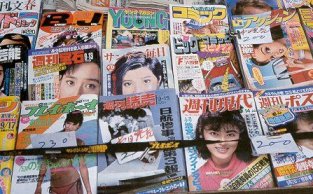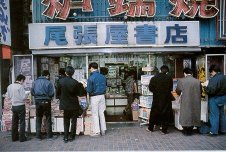
Reading material in Japan
One of the things the Japanese are noted for is their almost voracious reading appetites. For example, many Japanese will purchase a manga (which is a collection of anime stories and is usually very thick, almost phonebook sized, printed on relatively cheap paper) and will read that during their commute to and from work.
For a long time in Japan the publishing of written works was under the control of Buddhist temples. There were not for widespread distribution, though, and the printing itself was a difficult and time-consuming process since each entire page was carved onto a wooden block and the block was then used to print copies of the page.
Printing presses entered Japan in the latter part of the 16th century from the Jesuits and from Korea allowed printing to be done easier and more efficiently. Unfortunately the use of movable type was expensive, and in the 1640's publishers went back to using wooden blocks for printing. The end result of both approaches was that written materials were now much cheaper than they originally were and were available to almost anyone. Circulating libraries had their start in the 1700's. A type of newspaper, referred to as a "broadsheet" began to be sold on street corners, supplying the reader with information on various disasters like fires and floods.

An example of the widespread availability of printed materials is shown in the picture above. The average household in Japan takes two daily newspapers. Many of the magazines feature very attractive girls on the front covers, a practice followed almost everywhere based on the principle that "sex sells."

This picture is an example of a bookstore in Japan. It is not unusual at all for people to stand there and read materials and not be asked to leave by the store management. In addition to bookstores there are even vending machines that will distribute magazines, something not done anywhere else as far as I know.
This is another major difference between Japan and the U.S. People as a whole in the U.S. do not have the same type of desire for reading as do Japanese. Most people do not read anything other than the daily newspaper, in fact. Some one once told me that something like 90% or so of books are bought by about 10% of the U.S. population. This can be traced, very likely, to the differences in the school systems and homes where there little support or encouragement for voluntary reading.
Main Index
Japan main page
Japanese-American Internment Camps index page
Japan and World War II index page
|